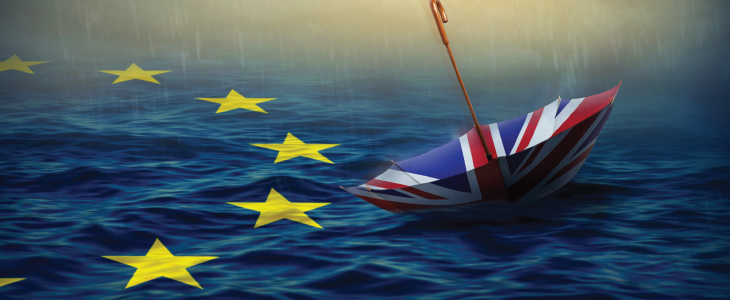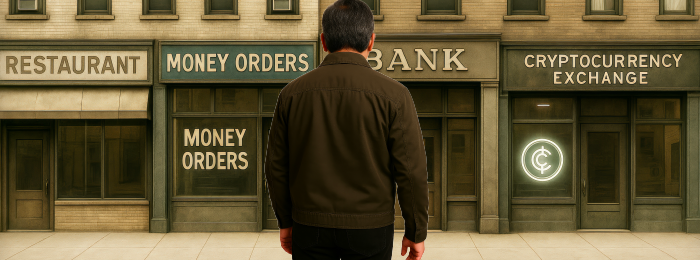
Once the U.K. exits the European Union (EU), it will no longer be expected to follow EU sanctions designations and regulations. After Brexit, will the U.K. hew closer to the lines in the sand drawn by the U.S., stay the course in line with the EU or forge its own path somewhere in the middle? An informed guess is that—while in the short term—Her Majesty’s Treasury (HM Treasury) follows current European regulatory strictures, they may be less likely to continue down that road if Europe looks for rapprochement with Russia. Similarly, it is more likely that the U.K. will be more forceful in responding to Iranian provocations than its neighbors across the English Channel, while still taking pains to preserve the Joint Comprehensive Plan of Action (JCPOA). In addition, should the situation in Syria stabilize, countries located on the continent may be more amenable to loosening restrictions sooner. All of these potential occurrences are driven by divergences in economic interests within the current EU bloc.
Changing the Channel
Immediately after the U.K. leaves the EU, the status quo will be maintained for a period of time. This is partially due to the fact that a significant portion of EU sanctions targets are designated under the United Nations and European Union Financial Sanctions (Linking) Regulations. There are 20 country-specific programs which either go beyond the restrictions in U.N. resolutions, or are wholly separate from their efforts. Of those, the most far-reaching programs are related to Syria, North Korea, Russia and Crimea, as well as the sanctions that were imposed on Iran prior to the implementation of the JCPOA. The EU Sanctions Map provides a visual guide to the extent of restrictions placed under each program, either promulgated or extended by the EU, as well as those adhered to and maintained by the U.N.1
In addition, the U.K.’s Sanctions and Anti-Money Laundering Act 2018, in conjunction with the European Union (Withdrawal) Act 2018, retains EU sanctions law as of the actual exit date. Therefore, at least for the very short term, both sets of sanctions will remain aligned—not counting designations made autonomously by the U.K., such as those made under the Terrorist Asset-Freezing etc. Act 2010.
However, what will occur with the passage of time is another story. Using the lens of historical and potential future impacts on international trade and a look at the four sets of sanctions restrictions provides useful insight as to the future for continued regulatory harmony.2
North Korea
Of the major sanctions regimes, the one most likely to remain in lockstep on both sides of the channel is the set of restrictions and prohibitions imposed on North Korea. The last year in which an EU country imported a relatively significant amount of North Korean goods was in 2013, when the Netherlands imported $121 million. Italy’s export of $43.6 million in 2010 was the last time an EU member shipped a significant amount of goods and services to North Korea. In addition, the amount and nature of the goods traded provides little incentive or leverage to seek relaxations in sanctions. In 2016, the most prominent import into North Korea was $165 million of synthetic yarn woven fabric, while the largest export was $1.06 billion of coal briquettes, with textiles totaling $589 million exported. Thus, at the current time, there is no economic incentive or leverage due to trade in critical goods that might cause a loosening or elimination of sanctions for either the U.K. or the rest of the EU.
Of the major sanctions regimes, the one most likely to remain in lockstep on both sides of the channel is the set of restrictions and prohibitions imposed on North Korea
Syria
Syrian sanctions programs are also unlikely—in the near term—to drive a wedge between the U.K. and the remaining EU member nations, mainly due to the fact that Syria’s international trade is currently significantly smaller than even North Korea’s. As of 2016, it was the 158th largest exporter and the 135th largest importer, with its $748 million in total exports that year more than 25 percent smaller than North Korea’s most prominent export. In 2016, Spain imported $25 million of Syrian goods, and Italy exported $78.5 million of its goods to Syria.
However, European commerce with Syria has declined drastically since 2012. The prior year, Italy and Germany both imported an excess of a billion dollars worth of Syrian goods, and four other EU countries imported more than $100 million each. While the decline in exports after 2011 was less pronounced, Italy exported $1.26 billion and Germany exported $712 million worth of goods to Syria that year. However, the U.K. imported only $21.1 million worth of goods in 2011, although it was one of 10 other countries with over $100 million in exports to Syria.
Not only does the discrepancy in the decrease in the trade volumes between the U.K. and the rest of the EU provide less incentive to restore trade than other European nations, the nature of the goods imported and exported tells a similar tale. In 2011, Syria’s largest imports were refined petroleum ($1.65 billion), cars ($573 million) and semi-finished iron ($544 million), with gas turbines, telephones, insulated wire and delivery trucks all being finished goods which contributed over $250 million each to imports. Of these goods, Italy, Germany and Turkey appear as notable trade partners, while the U.K. does not. Similarly, Syria’s greatest export ($3.19 billion) was crude petroleum, which was wholly exported to India, comprising 45 percent of its total. Refined petroleum ($941 million) adds another 13 percent to the total, of which France, Italy, Greece, Turkey and Spain were all notable customers, while the U.K. was noticeably absent from that list.
Therefore, should the situation in Syria return to some modicum of political stability, it is possible that the EU might have an economic incentive to ease sanctions without the U.K. following suit, particularly if there is a need to tap Syria’s energy products output.
Iran
International trade never really diminished between Europe and Iran as it did with Syria and North Korea. A significant element of that is energy exports from Iran. A May 2018 article notes that, while China, India and Korea are the largest purchasers of Iranian crude and condensates, five of the next seven countries are EU members.3
According to the European Commission, the entire bloc exported 10.8 billion euros (approximately $13 billion) in goods to Iran, and imported 10.1 billion euros (approximately $12.1 billion) in 2017, which were significant increases since the implementation of the JCPOA.4 In contrast, Iran exported less than half as much ($5.6 billion) to all of Europe (which includes non-EU countries) the previous year. Of that figure, France imported $1.3 billion in Iranian crude oil, Greece $718 million, Spain $705 million and Italy $693 million. In fact, in 2017, almost 89 percent of all Iranian exports to the EU were energy-related.
While the U.K. does conduct some international trade, it has been—until 2017—significantly smaller than that of the rest of the EU
While the U.K. does conduct some international trade, it has been—until 2017—significantly smaller than that of the rest of the EU. In 2017, Iran exported $48.15 million to the U.K., yet welcomed $1.1 billion in imports from it.5 The previous year—a year in which all of Europe, excluding Russia, exported $9.3 billion in goods to Iran—the U.K. was responsible for $192 million of that figure, while 10 other EU member countries each contributed $250 million or more in goods. In one year, the U.K.’s share of European exports to Iran approximately quadrupled from about 2 percent to well over 8 percent.
This gives countries on both sides of the channel real economic incentives to make the JCPOA work. The continent’s need for Iranian oil perhaps makes their motivation stronger, and there were more than a few news articles about European business delegations rushing out to reestablish ties with Tehran, even while banks were dragging their feet in fear of U.S. secondary sanctions. The U.K.’s recent success in increasing exports also provides a significant incentive to keep relations with Iran on a steady path. However, as it is not as dependent on Iran’s energy resources—which is a much stronger motivating force than seeking new business opportunities—the U.K. might be more likely to take punitive measures against Iranian malfeasance than their former EU colleagues.
Russia
The previous point leads eastward—to Russia. The possible tension between the EU’s and U.K.’s views on Russian sanctions does not revolve around a disagreement of potential economic windfalls. Rather, the dependency of most of Western Europe on Russian energy supplies, and the threat of those being cut off at the source, is the trade issue which has the greatest likelihood of separating the U.K. from the rest of the EU.
According to World’s Top Exports, three of Russia’s five largest trade partners are EU members (with Italy coming in sixth place).6 While the U.K. is the 12th largest partner, its trading volume is only a quarter that of the Netherlands (the second largest) and half the amount traded by Turkey (fifth largest). Perhaps more notably, none of these countries have a trade surplus with Russia. Overall, financial sanctions are more likely to impact Russia significantly more than its European trade partner.
Economic sanctions, to be effective, rely on consistency and sheer numbers
However, below these numbers lies disturbing detail: Russian energy exports. In 2016, while the U.K. imported about $2.1 billion in refined petroleum products and coal briquettes, it pales in comparison to the amounts—especially when considered on a per-capita basis—of energy imports by other EU countries such as the Netherlands ($19 billion), Germany ($11.2 billion) and Italy ($8.3 billion). Losing access to such essential commodities provides a powerful incentive for ignoring malign activities or minimizing any responses to them. As a recent example of how such economic leverage may be reflected in public pronouncements and policy, Italian government officials went on record in October 2018 criticizing sanctions on Russia and opposed extending them for longer periods of time (although they ultimately declined to veto an extension).7 It would not be surprising to find the U.K. be willing to stand firm on sanctions while other countries be moved to relax or eliminate them.
Two roads diverge?
While the ultimate alignment or divergence of future U.K. and EU sanctions policies remains unclear, and could be affected by the aforementioned economic drivers, one hard truth remains. Economic sanctions, to be effective, rely on consistency and sheer numbers. The more that major economies agree on sanctions policy, the better chance that such a policy can be effective in achieving its aims. That should give all parties on both sides of the channel pause as they consider how to move forward in the post-Brexit sanctions world.
- EU Sanctions Map, https://www.sanctionsmap.eu
- The Observatory of Economic Complexity, https://atlas.media.mit.edu/en/
- “Who Was Buying Iranian Oil And What Happens Next?” ZeroHedge, OilPrice.com, May 9, 2018, https://oilprice.com/Energy/Crude-Oil/Who-Was-Buying-Iranian-Oil-And-What-Happens-Next.html
- “Countries and regions,” European Commission, May 25, 2018, http://ec.europa.eu/trade/policy/countries-and-regions/countries/iran/
- “Iran-UK Trade Jumps 153%,” Financial Tribune, May 2, 2018, https://financialtribune.com/articles/economy-domestic-economy/85690/iran-uk-trade-jumps-153
- Daniel Workman, “Russia’s Top Trading Partners,” World’s Top Exports, December 9, 2018, http://www.worldstopexports.com/russias-top-import-partners/
- Angelo Amante et. al, “Italy’s PM criticises economic sanctions against Russia,” Reuters, October 16, 2018, https://uk.reuters.com/article/uk-russia-sanctions-italy-conte/italys-pm-criticises-economic-sanctions-against-russia-idUKKCN1MQ10O










